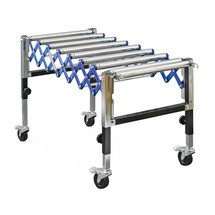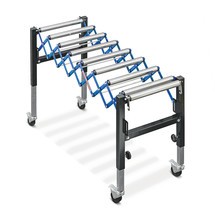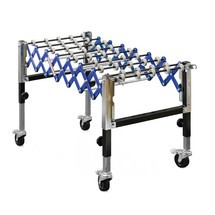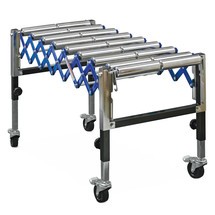
Conveyor tables
Buying Tips
Filter
back
Your selection: 4 products
Conveyor table, 180 kg load capacity, Ameise®
- Ideal for heavy transport goods
- Movable thanks to 4 steering castors with wheel stops
- Tie-bars for connecting multiple conveyors
Conveyor table, Ameise®
- Light, compact and available in different versions
- Movable thanks to 4 steering castors with wheel stops
- Tie-bars for connecting multiple conveyors
Conveyor table, 30 kg load capacity, mini roller, Ameise®
- Mobile accordion style mini roller conveyor with flexible routing
- Height-adjustable for ergonomic working
- Independently mounted plastic rollers for secure transport
Conveyor table, twin rollers, 180 kg load capacity, Ameise®
- Ideal for tight corners
- Movable thanks to 4 steering castors with wheel stops
- Tie-bars for connecting multiple conveyors




